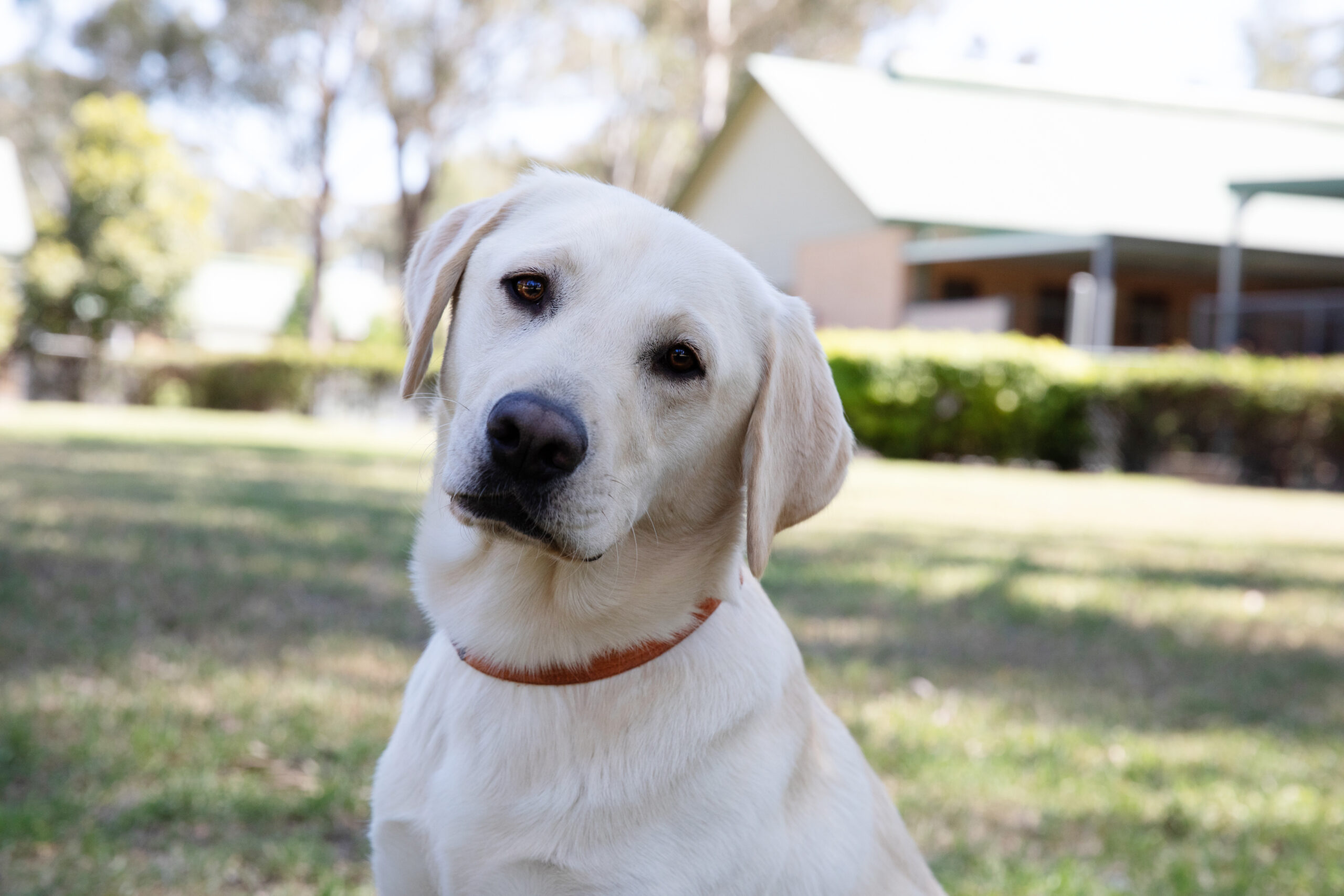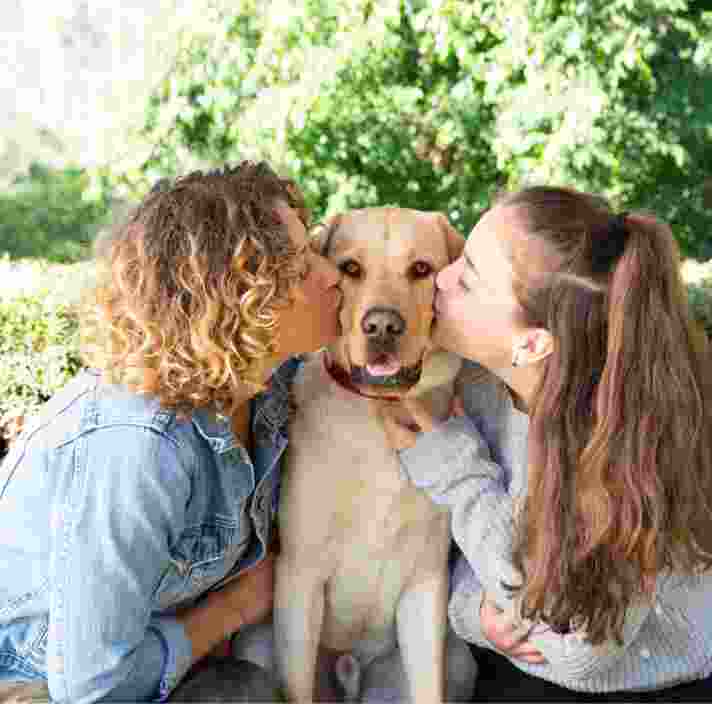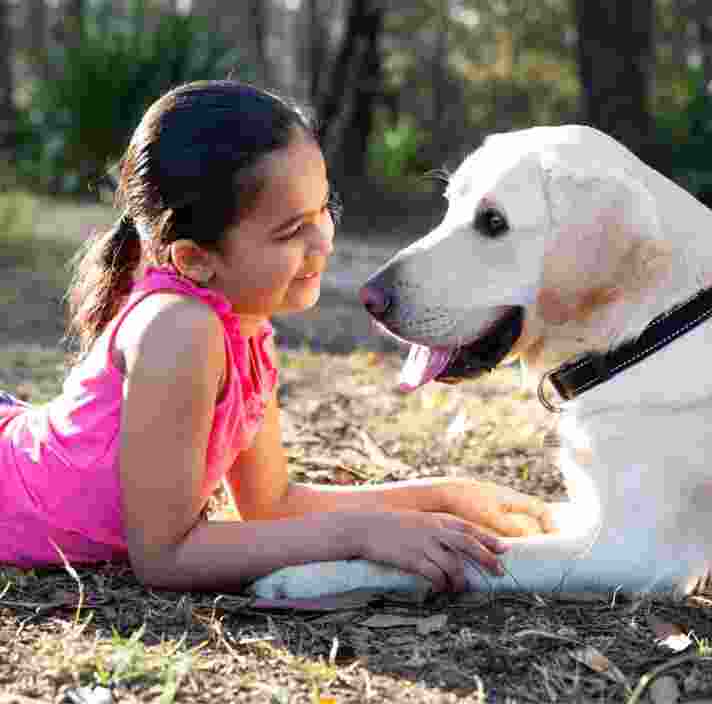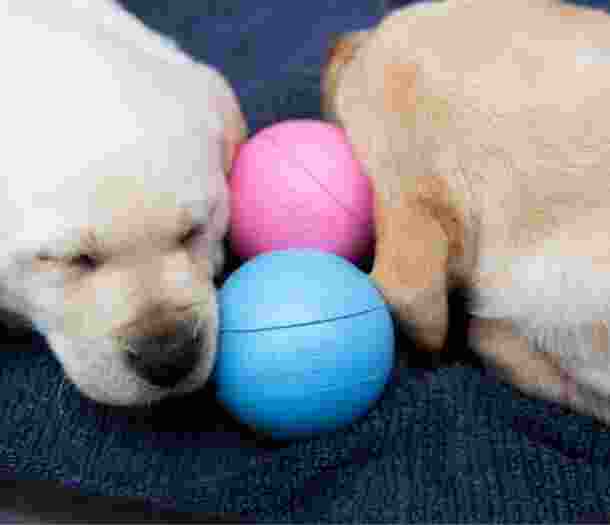On this page:
How to apply for a reclassified Guide Dog
A limited number of reclassified dogs are offered to the general public.
Unfortunately we are not currently accepting expressions of interest for reclassified dog adoption. Please check back again later.

What are reclassified dogs?
Some puppies have different personalities, which mean they're better suited to other roles.
Due to the exceptionally high standards required to become a Guide Dog or Therapy Dog, we need loving forever homes for the dogs that are not quite suited to these demanding roles. A dog may be made available for adoption because they have not passed certain health or training tests.
Priority for our reclassified dogs is given to identifying an alternative role through which they can support a new handler’s independence.
Some of these roles include:
- Therapy Dogs and Wellbeing Labs, including PTSD Dogs
- Ambassador Dogs
- Companion Dogs
If such a role cannot be identified, the dog will then be classified as a LAP Dog (Loved as Pets) and we will look for a suitable family ‘forever’ home.
In the case where one of our dogs is reclassified as a pet, they will step into their new and just as imPAWtant role as a LAP Dog. Priority for LAP Dogs will be given to people who support our ongoing efforts to enable Victorians, who are blind or have low vision, to achieve a life without limits (e.g. Major donors, Puppy Raisers, Breeding Stock Guardians, etc.).
PLEASE NOTE: Unless specified due to the nature of any ongoing role, our reclassified dogs do not have the same access rights as a Guide Dog/puppy in training or a working Guide Dog.

What makes a good fit for a Guide Dog home?
The perfect home for a LAP Dog is a loving, welcoming environment.
Generally speaking, a welcoming, loving environment makes a fantastic fit for a reclassified Guide Dog. Beyond that, there are some specific requirements for best-possible forever homes:
- Our dogs are accustomed to sleeping indoors and spend most of their days in the company of humans. We ask that our dogs are generally not left alone for more than 4 hours at a time and do not become ‘back-yard’ dogs.
- You must have a fully fenced yard or a suitable living space for a large sized dog.
- Labradors are often joyful and energetic dogs that need sufficient exercise and daily enrichment to live happy and healthy lives. We ask that applicants are able to provide this for their newly matched LAP Dog and have a basic understanding of general canine husbandry.
- Every dog raised by Guide Dogs Victoria is de-sexed and microchipped. All LAP Dogs are vet checked prior to placement with their new owner and are up to date with vaccination, heartworm and worming treatment.

Other ways to get involved
There are many ways to help out.
-
As a Puppy Raiser, you're responsible for giving the best care and training possible for a young pup, usually for around 12 months.
-
As a Puppy Pal, you'll be part of a community following a litter of adorable pups on their journey to becoming Guide Dogs.
-
Your donation goes towards ensuring people with low vision and blindness can partner with Guide Dogs, if and when they choose to.
Ready to continue?
Seems like you have filled this form earlier. Let’s pick up where you left off.
